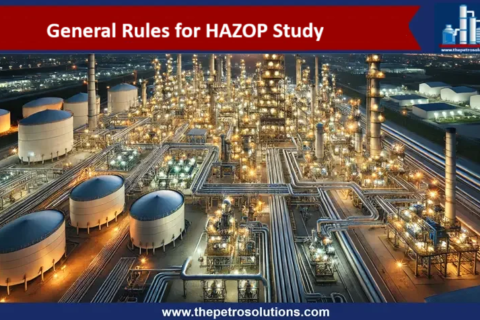Hydrofluoric acid (HF) alkylation units are high-hazard facilities that require strict safety measures to be in place to protect workers, the environment, and the facility. Hydrofluoric acid (HF) used in the Alkylation unit is a highly corrosive and toxic chemical that requires strict safety control measures for safe unit operation. Here are some key safety measures that are typically implemented in HF alkylation units:
- Process design: The design of the alkylation unit should be such that it minimizes the risk of leaks, spills, and explosions. This includes the use of materials that are resistant to corrosion and the use of redundant safety systems to prevent equipment failure.
- Personal protective equipment: Workers should be provided with appropriate personal protective equipment, such as goggles, gloves, and protective clothing, to protect them from exposure to corrosive hydrofluoric acid and toxic gases. All the PPEs mentioned in the safety data should be available at the site.
- Hydrofluoric Acid Safety Training: Workers should be properly trained on the hazards associated with the HF alkylation process, how to avoid hydrofluoric acid exposure and the proper use of personal protective equipment. Further, workers should be fully trained about all the measures mentioned on the safety data sheet of hydrofluoric acid.
- Emergency procedures: The alkylation unit should have emergency procedures in place to respond to spills, leaks, or other incidents. These procedures should be regularly reviewed and tested to ensure they are effective.
- Monitoring and detection: The alkylation unit should have a health monitoring and detection system in place to early detect leaks, spills, or other incidents. These systems should be regularly tested and maintained to ensure they are working properly.
- Safety management: A safety management system should be in place to ensure that safety is integrated into all aspects of the alkylation process, including regular safety audits, incident investigations, and emergency response planning.
- Fire protection: The facility should have fire protection systems in place such as fire alarms, fire extinguishers, and fire suppression systems to protect the equipment and the facility from fire.
- Ventilation: Proper ventilation should be in place to ensure that workers are not exposed to harmful gases or fumes.
- Confined space entry: Alkylation units have confined spaces, which are potential hazards for workers. Proper procedures and equipment should be in place to ensure the safety of workers entering these spaces.
- Medical surveillance: Workers should have regular medical checkups and monitoring for exposure to HF and its aftermath, as it can cause severe burns and long-term health effects.
- Neutralizing agents: Neutralizing agents should be readily available and workers should be trained in their use in case of an accidental release of HF. The use of neutralizing agents is required to neutralize the HF spills and leaks in order to protect workers, the environment, and the facility. The common HF-neutralizing agents are Sodium carbonate (Na2CO3), Sodium bicarbonate (NaHCO3), Calcium carbonate (CaCO3) etc.
- Storage: Hydrofluoric acid should be stored in appropriate containers and in a well-ventilated area, away from other chemicals and sources of ignition.
- Handling: Hydrofluoric acid should be handled with care, and only by trained personnel. Spills should be cleaned up immediately, and appropriate neutralizing agents should be on hand to neutralize any spills.
- Labelling: Hydrofluoric acid should be clearly labelled, and warning signs should be posted in the area where it is stored and used
- Transport: When transporting Hydrofluoric acid, it should be in a labelled and sealed container, with compatible absorbents in case of a leak or spill.
- Spills: Spills should be cleaned up immediately, and appropriate neutralizing agents should be on hand to neutralize any spills. Workers should be trained on the proper procedures for cleaning up spills.
For further information, discussion and queries please comment in the box below or contact us at admin@ or follow us on Facebook & LinkedIn.
Certified Functional Safety Professional (FSP, TÜV SÜD), Certified HAZOP & PHA Leader, LOPA Practitioner, and Specialist in SIL Verification & Functional Safety Lifecycle, with 18 years of professional experience in Plant Operations and Process Safety across Petroleum Refining and Fertilizer Complexes.
- Nasir Hussainhttps://thepetrosolutions.com/author/admin/
- Nasir Hussainhttps://thepetrosolutions.com/author/admin/
- Nasir Hussainhttps://thepetrosolutions.com/author/admin/
- Nasir Hussainhttps://thepetrosolutions.com/author/admin/






